This Korean Style Pot Roast is a smoked, braised, richly flavored dish that turns a simple chuck roast into tender, spicy-sweet meal. The combination of gochujang, miso, soy sauce, and dried chilies infuses bold, layered flavors through the entire roast, while a low, slow cook in a Dutch oven gives you melt-in-your-mouth tender pieces of beef that everyone will love. This recipe is ideal for a cozy weekend meal or to batch cook for the week.
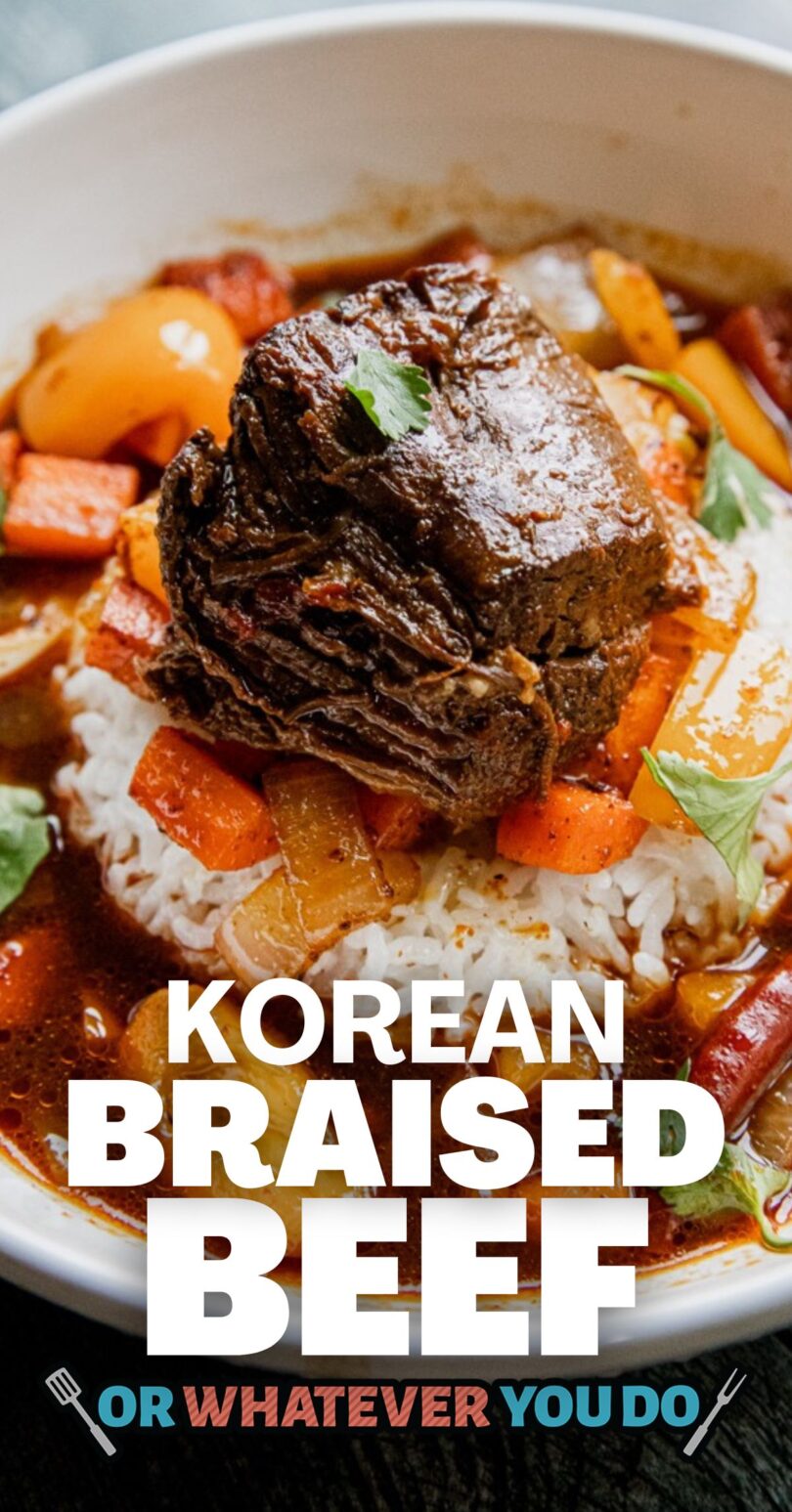
Korean Braised Beef
Chuck roast is one of my favorite cuts of beef. It is large, feeds a crowd, and consistently turns out tender while remaining moist. We make it all the time in dishes like our original Traeger Pot Roast, Poor Man’s Burnt Ends, and so many different tacos (get those recipes below).
Serve this with a side of lightly stir-fried vegetables and steamed rice. Braised beef also stores and reheats beautifully, making it an excellent meal prep option. Whether shredded or sliced, the meat soaks up every bit of the flavorful broth and only gets better with time.
This Korean Style Chuck Roast is definitely NOT “authentic” Korean cuisine. We’re going to call this a “fusion” dish, but either way – it’s delicious. If you’re looking for incredible Korean food, make sure to check out Maangchi! She’s been making authentic Korean cuisine for over 10 years, has best-selling cookbooks, and is an excellent resource for authentic, delicious, Korean food.
Why You’ll Love This Dish
- Smoked and Braised Flavor – The combination of smoking and simmering builds rich, bold taste.
- Deep, Layered Spice – Balanced heat from gochujang, chili sauces, and dried peppers.
- Great For Meal Prep – Tastes even better the next day and reheats easily.
- Simple Process – Minimal prep with long, low cooking that does the work for you.
- Versatile – Serve over rice, in wraps, or with stir-fried vegetables.
Try our Kalbi Shot Ribs Recipe, too!
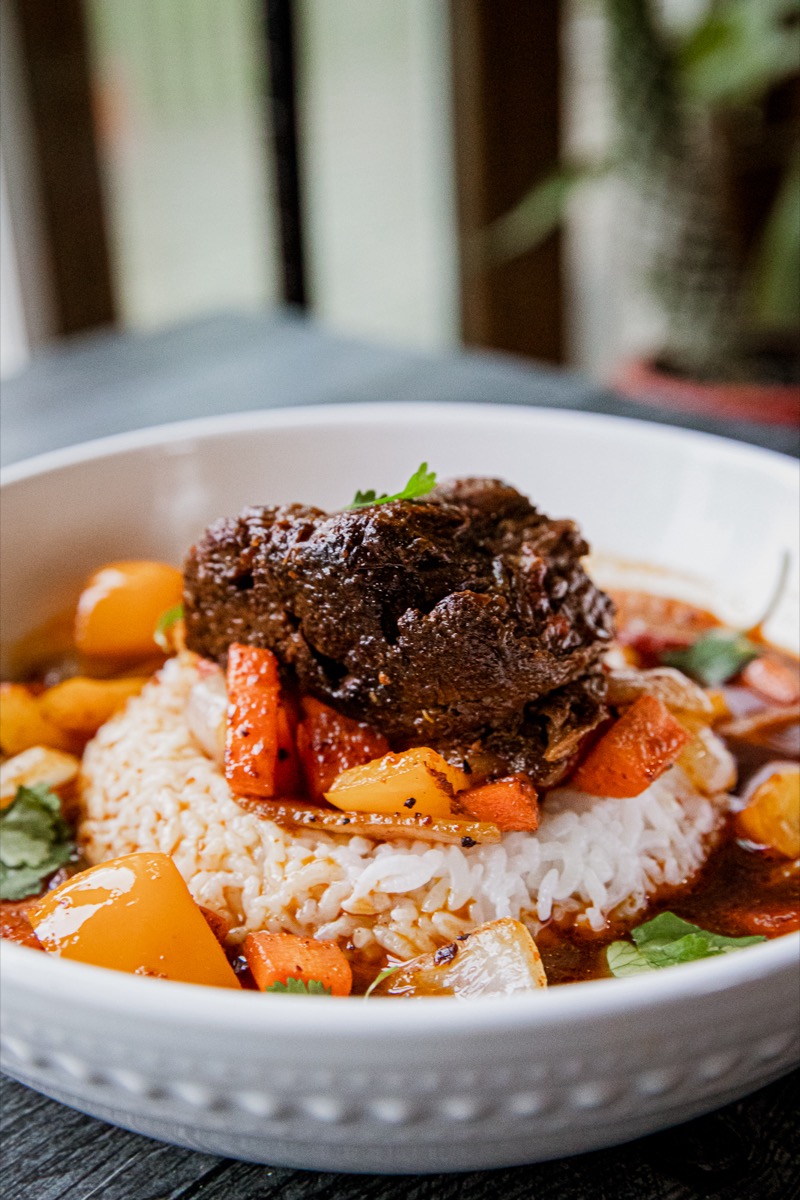
Gochujang Beef Roast Shopping List
Wondering if you have to hit the store? Here’s the list of items you’ll need to make this recipe. For specific amounts, please refer to the printable recipe card at the bottom of the post.
- Beef Chuck Roast – A well-marbled cut that becomes fall-apart tender when braised.
- Salt, Black Pepper, Garlic Powder – Enhances the beef’s natural flavor and balances the sauce’s richness.
- Avocado Oil or Beef Tallow – High smoke point fats for browning the meat.
- White Onion – Adds sweetness and depth as it breaks down during cooking.
- Garlic – A foundational aromatic that blends into the sauce.
- Gochujang Paste – Fermented Korean chili paste that adds sweet, spicy umami.
- Red Miso Paste – Fermented soy paste with a deep, salty-sweet richness.
- Sriracha – Adds tangy heat and complexity.
- Garlic Chili Sauce – Brings heat and texture to the sauce.
- Soy Sauce – Salty, umami base that ties the sauce together.
- Brown Sugar – Balances the heat with subtle sweetness.
- Dried Whole Chili Peppers – Infuse the broth with a mellow, building heat.
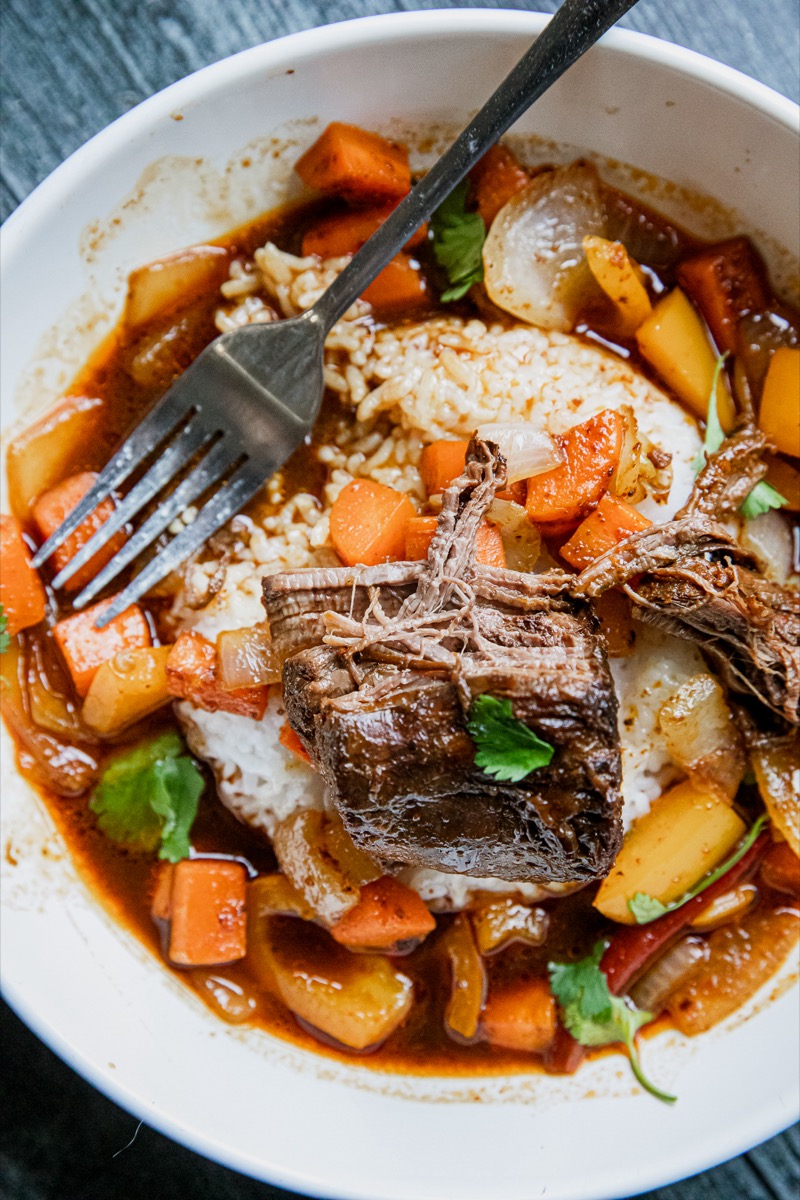
How To Make Korean Chuck Roast
This is just the overview so you can see what you’re actually getting into here. When you are cooking, you’ll want to use the full recipe at the bottom of the page.
- Season – Season the beef roast with the salt, pepper, and garlic powder.
- Smoke – Preheat your smoker to 225°F. Add the seasoned roast to the smoker and let smoke for 1 hour.
- Braising Sauce – Preheat your Dutch oven on the stovetop with the avocado oil. Add the onion and garlic and sauté over medium heat for 4–5 minutes. Add the rest of the ingredients to the pot. Stir until combined, and bring to a simmer.
- Braise – Increase the smoker temperature to 325°F. Add the roast back to the pot and place the whole pot into the smoker. Let cook for about 3 hours, or until the roast is tender and easily shreddable. Check every 45–60 minutes and add a bit of water if necessary.
- Serve – Shred and serve, or cut up chunks to serve. Pictured here served with stir-fried vegetables and steamed rice.

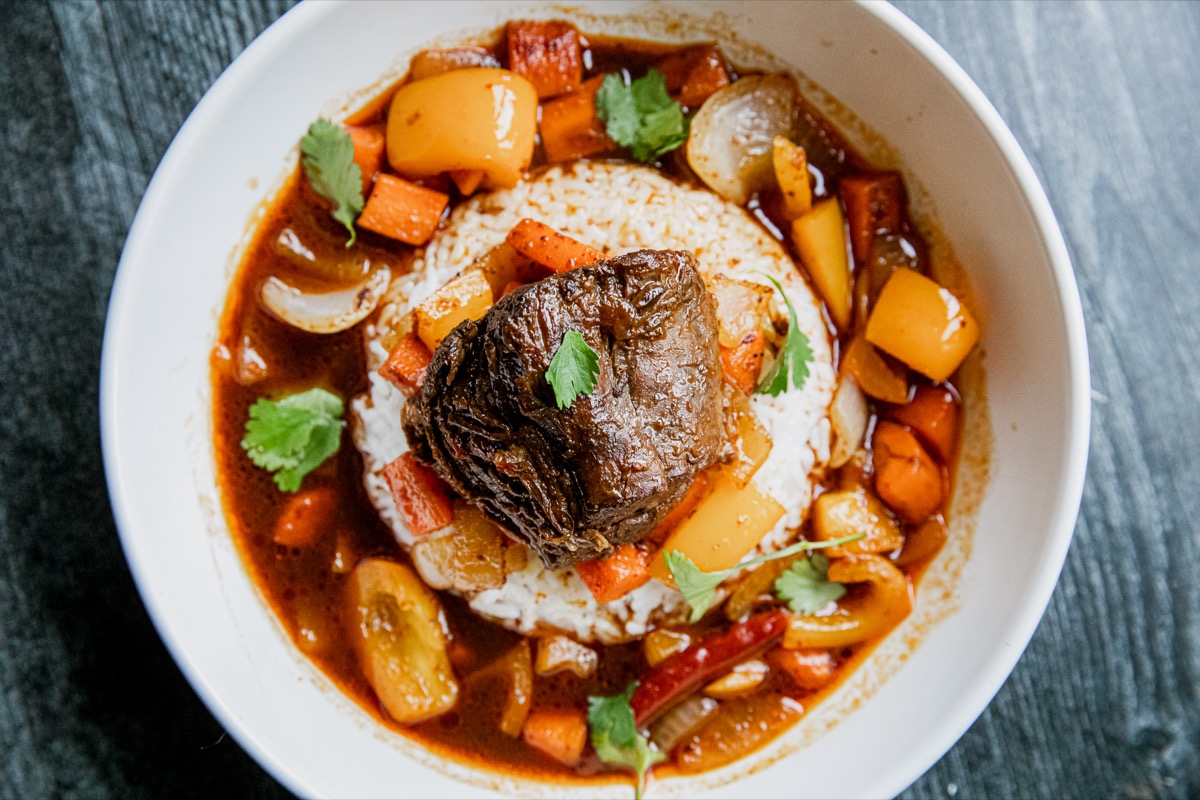
FAQ
How should I store leftovers?
Store in an airtight container in the fridge for up to 5 days. Reheat gently on the stove or in the microwave with a splash of water to loosen the sauce.
Can I make this in advance?
Yes. The flavor improves overnight. Make a day ahead and reheat gently before serving.
How can I adjust the heat level?
Omit the sriracha or reduce the dried chilies for less heat. Add more gochujang or chili sauce if you want it spicier.
What substitutions work here?
Try pork shoulder instead of beef, or tamari for a gluten-free soy sauce alternative. White miso can replace red for a lighter flavor.
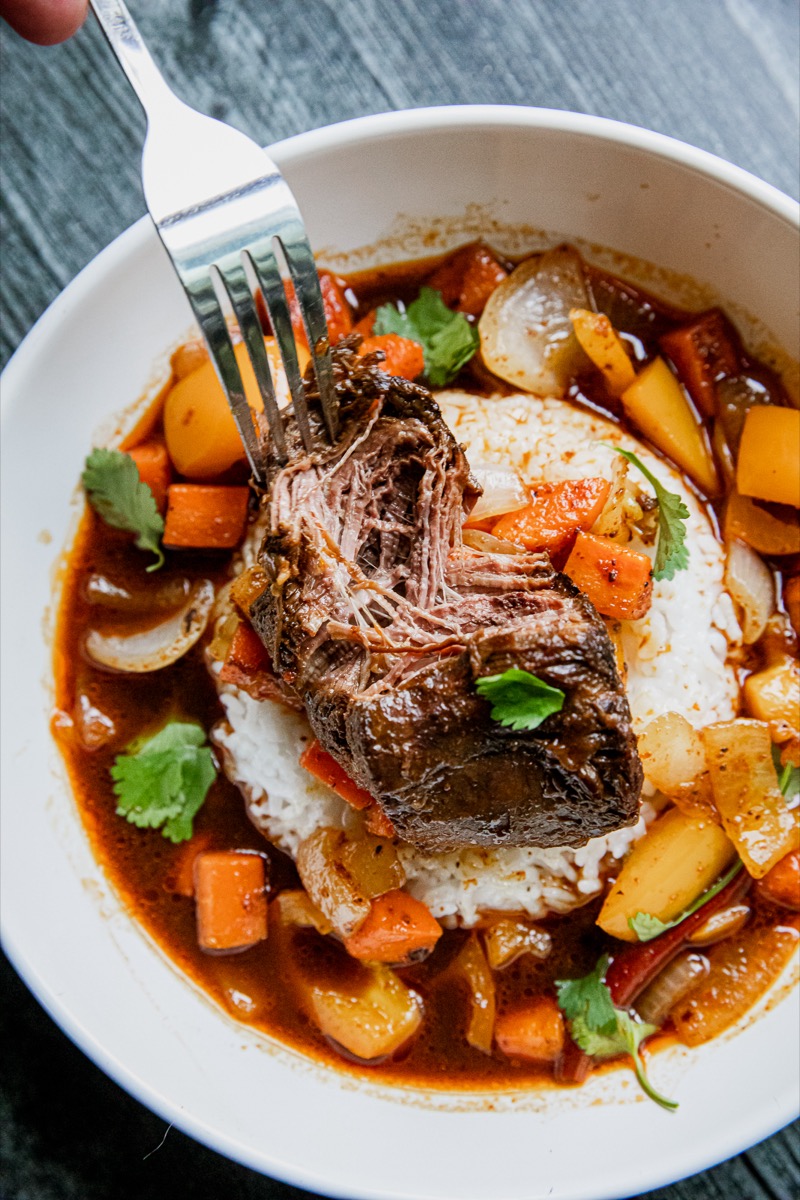
Serve This With…
- Steamed Jasmine Rice
- Stir-fried bok choy or snap peas
- Cucumber salad with sesame oil and vinegar
- Kimchi or pickled daikon
Spicy Beef and Korean Rice Cakes
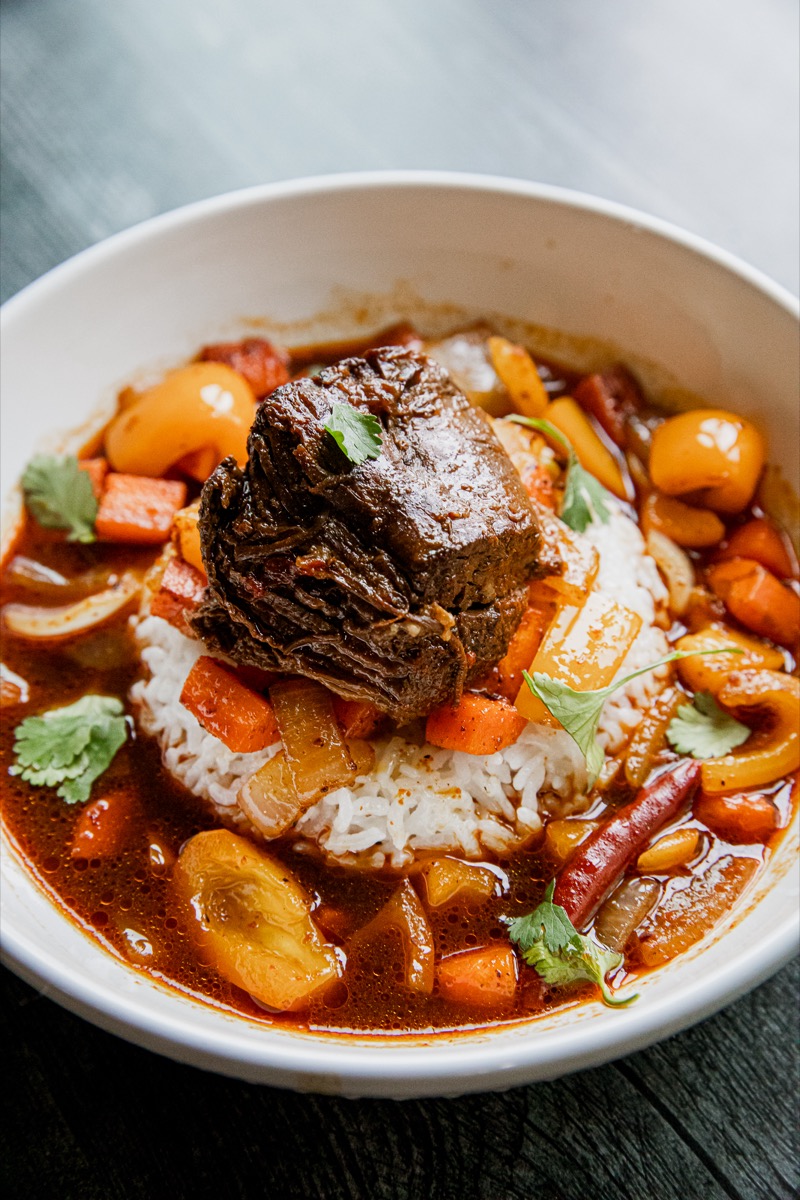
More Recipes Using Chuck Roast
- Smoked Chuck Roast
- Smoked Chuck Tender Roast
- Chuck Roast Stroganoff
- Smoked Shredded Rump Roast Tacos
- Beef Stroganoff Soup Recipe
- Smoked Birria Tamales
- Smoked Shredded Beef Pot Pie
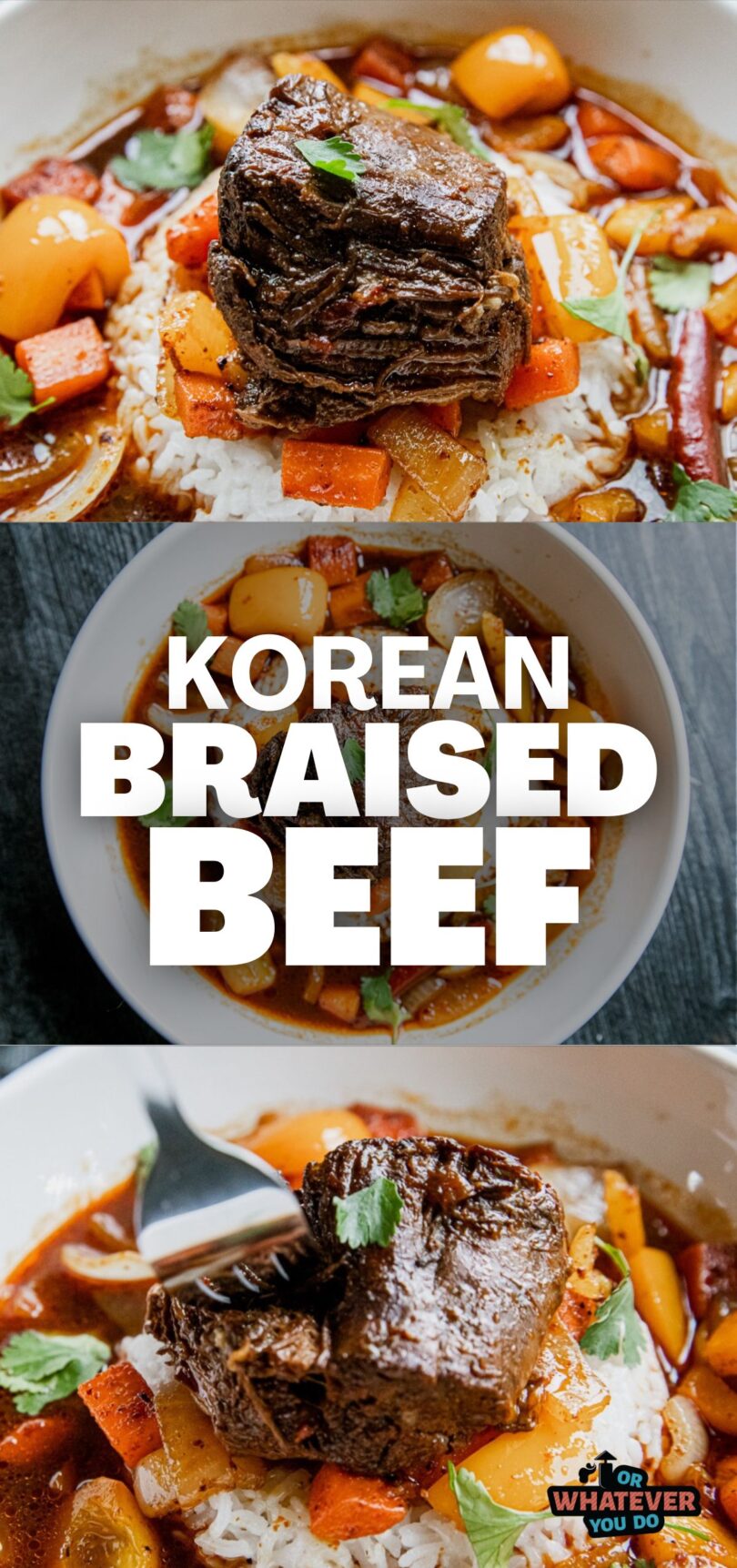

Traeger Korean Style Pot Roast
Ingredients
- 3 pounds beef chuck roast
- ½ teaspoon salt
- ½ teaspoon black pepper
- ½ teaspoon garlic powder
- 2 tablespoons avocado oil or beef tallow
- 1 large white onion
- 4 cloves garlic
- 2 tablespoons gochujang paste
- 2 tablespoons red miso paste
- 1 tablespoon sriracha
- 1 tablespoon garlic chili sauce
- 3 tablespoons soy sauce
- 1 tablespoon brown sugar
- 6 whole dried chili peppers
- 2 cups water
Instructions
- Season the beef roast with the salt, pepper, and garlic powder.
- Preheat your smoker to 225°F. Add the seasoned roast to the smoker and let smoke for 1 hour.
- Preheat your Dutch oven on the stovetop with the avocado oil. Add the onion and garlic and saute over medium heat for 4-5 minutes.
- Add the rest of the ingredients to the post. Stir until combined, and bring to a simmer.
- Increase the temperature of the smoker to 325°F. Add the roast back to the pot and place the whole pot into the smoker.
- Let cook for about 3 hours, or until the roast is tender and easily shreddable. Check every 45-60 minutes, and add a bit of water if necessary.
- Shred and serve, or cut up chunks to serve. Pictured here served with stir-fried vegetables and steamed rice.

Cathy
Sunday 6th of April 2025
What kind of chili peppers are you using?
Nicole Johnson
Monday 7th of April 2025
We are using these. But dried thai chilies also work if you can't find the Korean chilies.